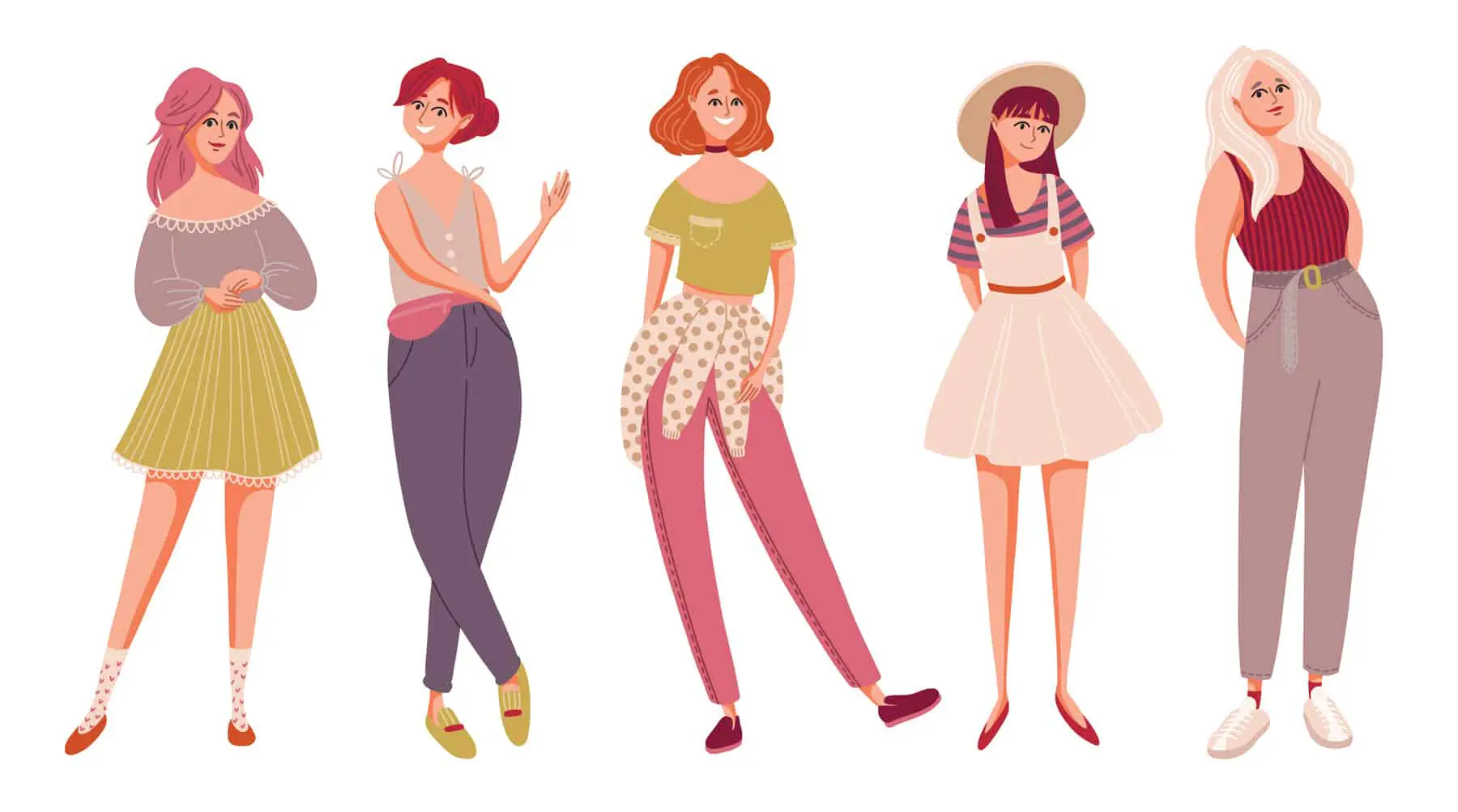By Melissa Snider
—
Take a moment and think about a loved one. When you consider this partner, child, parent, or friend, what comes to mind first?
Chances are, you didn’t think about the person’s weight.
Yet, surprisingly, children as young as three years old start to perceive and judge body sizes and shapes—either positively or negatively—based on messages they receive from family members. It’s easy to blame the media for flooding children and teens with images of “ideal” bodies, but the truth is, body positivity, for oneself and also for others, begins close to home.
Start With Self
A little self-reflection goes a long way when it comes to many aspects of parenting. Jackson-based clinical psychologist Sadie Monaghan Ph.D. encourages parents to think about their relationship with food, both now and early on in their lives. As a kid, were you offered second helpings or told that you didn’t need the calories? Did your parents allow sugar in the house or did you sneak to a neighbor’s house to get a sweet treat?
Monaghan suggests we help kids learn to trust their bodies to regulate their food intake by following natural hunger cues. But as a parent, fostering healthy eating habits is only part of the equation. Curbing negative self-talk is another important step.
“Don’t engage in behaviors that send a message to kids that they need to feel bad about themselves,” says Monaghan. “And, don’t body-shame other people.”
Ever-perceptive children easily pick up on parents’ insecurities, whether its hiding parts of your body that you don’t like or making comments about needing to lose a few pounds.
“All people have body vulnerabilities, and instead of judging that, we want to have compassion, care, and openness,” says Nicole Rue Psy.D., clinical psychologist and board member for the Jackson-based organization Girls Actively Participating (GAP). “No one is doing it the wrong way; we’re all doing the best we can.”
In fact, a focus on perfection can contribute to low self-confidence, according to GAP’s executive director, Elly Garrett. She says girls especially are aware of their bodies at an early age. Garrett mentions to start planting the seeds of “self-love, community-building, connection, and communication” early on in elementary-aged girls to lead them away from sometimes inevitable comparisons and self-judgement that can happen in their quest for “perfection.”
Parents can model these behaviors alongside their kids. “Put the focus on doing things that feel good; moving in ways that make you feel comfortable in your body,” says Monaghan. “Actively reduce stress, and eat enough [food] for the amount of activity you have in your life.”

Foster Critical Conversations
Small towns are not immune to eating disorders. In fact, based on Rue’s clinical experience, she estimates Jackson teens struggle with eating disorders in numbers as large as three times the national average. Some of this may stem from our unique population of active individuals combined with a national diet culture, explains Monaghan. “It gets crystalized when you’re in a small community like ours,” she says.
Rue educates families about the big difference between disordered eating and eating disorders, noting that most people have “disordered eating practices,” like emotional eating or restrictive dietary choices that aren’t nutritionally mandated. Eating disorders, on the other hand, become a pattern used multiple times a month as a regulatory tool, alongside an unhealthy fixation on physical appearance.
If you notice problematic behaviors in your child, like very restrictive eating, extreme mood swings, or an unhealthy drop in weight, it’s important to seek help immediately, as research shows that early intervention is critical to recovery. Also, Monaghan reminds parents to keep an open dialogue about food, with both sons and daughters, as eating disorders can sometimes go undiagnosed in men and boys.
“It’s important that we don’t leave out men and boys in these conversations,” says Rue. “Just because it’s less pronounced in public discourse, it’s very present in the ways that imagery can be internalized.”
Rather than swimming upstream against a strong current of media messages, dive in and help kids and teens interpret the messages they’re hearing. Also, try to understand the emotional feedback they’re getting from the media they consume. Rue and Garrett say we can teach kids to process information by asking questions like: What are you feeling when you look at this picture? Why do you follow this person on Instagram? and What do you like about this image, video, or show?
Monaghan also recommends harnessing the recent explosion of “body positivity” in the media. “We need to normalize [the fact that] people can be the same height and all be healthy at different weights,” she says. “Bodies have a range.”
Parents can be intentional about consuming media with more inclusive representations, as well. This includes magazines and catalogs, in addition to television shows, and movies that depict different types of bodies, racial diversity, and gender expression. Share these outlets with your children and teens and point out stereotyping, shaming, and unrealistic media messages when you come across them.

Cultivating Confidence
We love others and ourselves because of who we are, not how we look. Rather than connecting value to physical appearance, Rue says we need to shift our perception of beauty so that “it’s not body-based, as much as it is capacity-based.”
Monaghan points out the connection between body positivity and attitudes toward sex and sexuality in our culture. “If girls and boys believe that their only value is in their body, and their body has to look a certain way to be valued, then they’re going to tend towards behaviors that make them feel more desirable,” she says.
Parents should guide their children to look beyond physical appearance, says Garrett. “Be accepting of your kids; hold space with empathy. Really help them discover who they are and who they want to be.”
Men, women, kids, and teens all receive media messages that are targeted and can lead to misperceptions of what’s ideal. Boys may view extremely muscular bodies as the ideal, whereas girls may think that being tall and lean is best. Parents can help by not putting unrealistic expectations on their own children and encouraging all expressions of gender, not just the traditional male and female roles.
Working to connect with each other around the content of our character is one way to bypass some of the unavoidable societal pressures to look and behave in certain ways. Rue says young people are “not only suffering because of the unattainable way that beauty is defined, but because they’re being defined by their beauty.”
In a world that sometimes reduces us to our perfect profile picture, we can and should model self-love. By living lives centered on what really matters, parents can give their kids the gift of confidence and positivity, and then remind them to pass it on.
Body Positivity Resources
—
- thebodypositive.org provides training materials for individuals, treatment providers, and educators aimed to help people “listen to their bodies, learn, and thrive.”
- Girls Actively Participating (GAP!), gapjh.org, offers programs for grades three and up, both in Jackson and Teton Valley. GAP! promotes the success of girls through education, self-discovery, and community building.
- The website Health at Every Size (haescommunity.com) celebrates body diversity through pledges, resources, and motivational speakers.
- amightygirl.com hosts an online collection of books, toys, and movies for “smart, confident, and courageous girls.” Check out their book list on body image and self-esteem.
- screenagersmovie.com provides resources, books, and podcasts for tweens, teens, and parents on social media, video gaming, addiction, and healthy practices.

